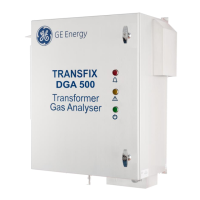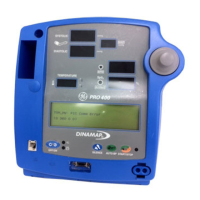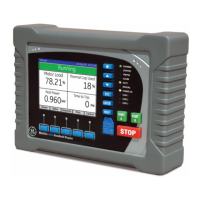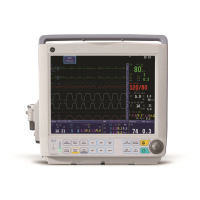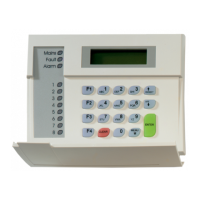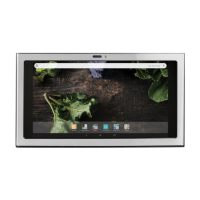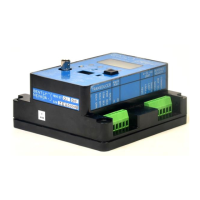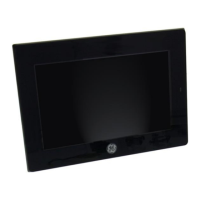Monitoring SpO2
2000966-386D Dash™ 3000/4000/5000 11-7
WARNING
INACCURATE MEASUREMENTS—Inaccurate measurements
may be caused by various patient or mechanical conditions. These
conditions include but are not limited to: venous pulsations;
hypotension; severe vasoconstriction; severe anemia; hypothermia;
shock; cardiac arrest; sensor tension; sensor placement on the same
extremity as a blood pressure cuff, arterial catheter or intravascular
line; or arterial occlusion proximal to the sensor.
WARNING
INTERFERING SUBSTANCES—Carboxyhemoglobin may
erroneously increase SpO
2
readings. The level of increase is
approximately equal to the amount of carboxyhemoglobin present.
Dyes, or any substance containing dyes, that change usual arterial
pigmentation may cause erroneous readings.
WARNING
MRI INTERFERENCE—Do not monitor SpO
2
or use SpO
2
probes
during magnetic resonance imaging (MRI) scanning. Induced
current could potentially cause burns. SpO
2
monitoring may affect
the MRI image, and the MRI unit may affect the accuracy of the
oximetry measurements.
NOTE
Read all literature accompanying sensors for specific safety information.
Neonates and Infants
The following precautions apply when monitoring neonate and infant patients.
WARNING
—The display of inaccurate pulse oximetry values has been linked
to the presence of poor signal strength or artifact due to patient
motion during signal analysis. This condition is most likely to be
encountered when the monitor is used on neonates or infants. These
same conditions in adults do not impact the values to the same
extent.
Use the following criteria when measuring SpO
2
on neonates and infants.
The peripheral pulse rate (PPR) as determined by the SpO
2
function must be
within ten percent of the ECG heart rate.
The SpO
2
signal strength indicator must have two or three asterisks displayed.
